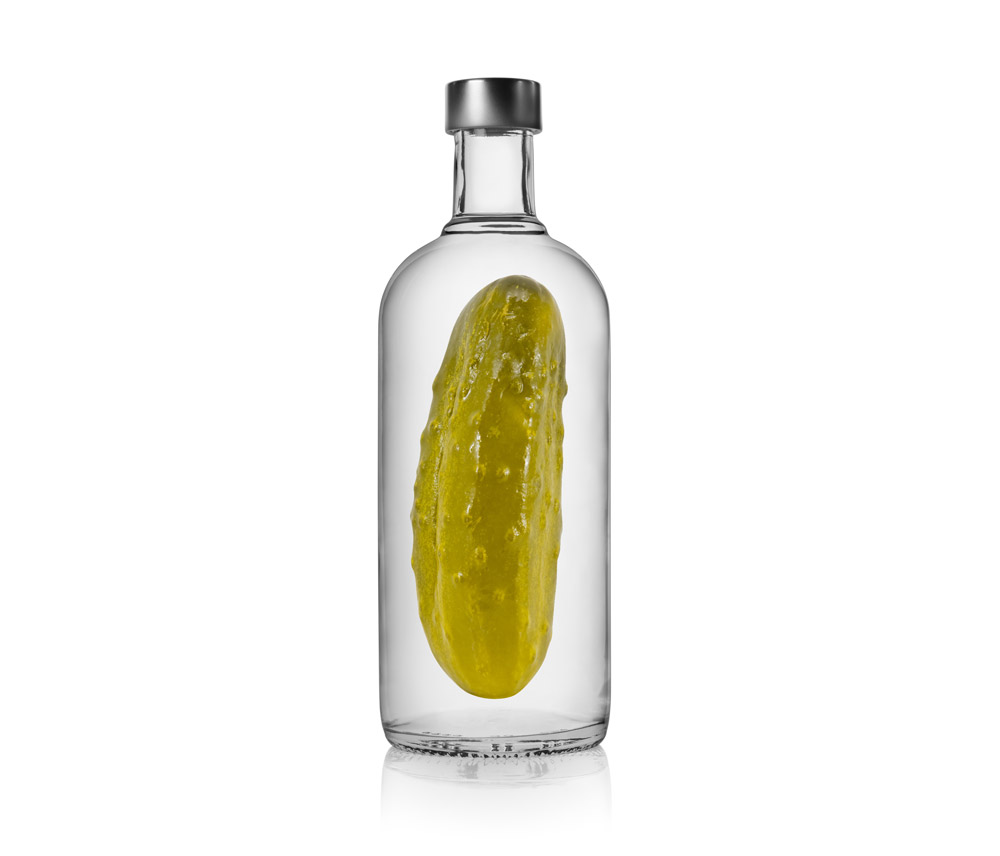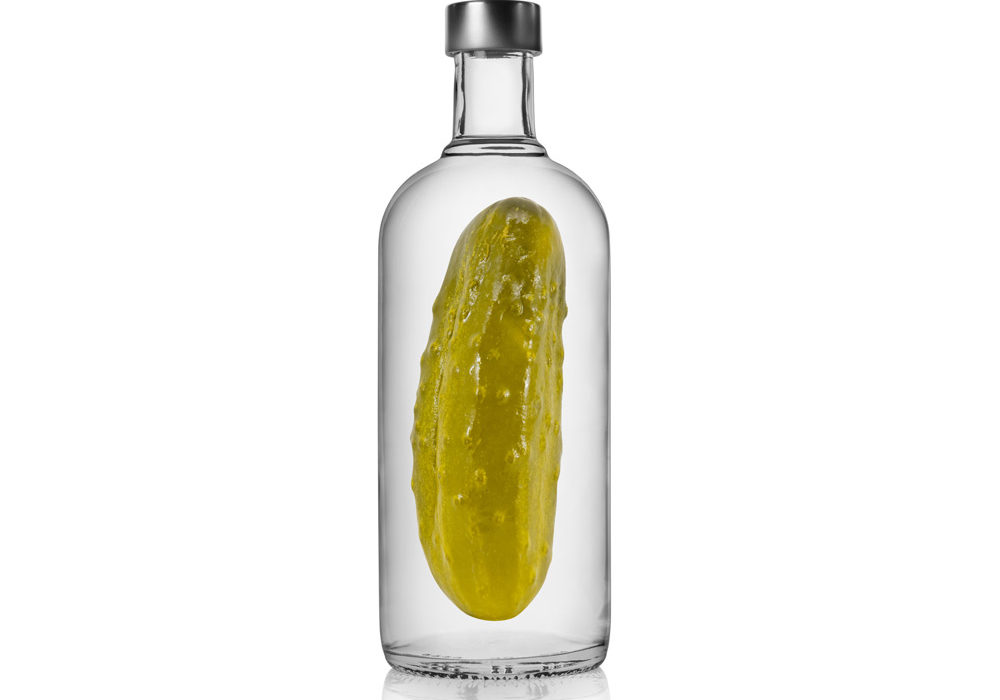
In an attempt, perhaps, to provide some relief from the continuing coronavirus crisis, we’re looking today at a topic that is lighter, zestier, and altogether divorced from all things connected with hand sanitizer or bathroom tissue. Today, in fact, we’re talking about a consumable that is greeted variously with delight or dismay, reluctance or reverence. For anyone growing up in Britain of the 1970s and 1980s, it was a staple on the Sunday afternoon supper table. A sight as familiar as a grandparent’s wrinkled smile, as inevitable as a post-prandial snooze. A critical component of the regionally famous ‘Ploughman’s Lunch*,’ this sweetly-savory, tart and tangy, brown and chunky foodstuff is hard to describe, even spawning its own Reddit thread that attempts to spell out the attraction.(1) So what is this mystery fare? Branston’s Pickle – a kind of condiment best eaten (arguably, if at all) with cheese. But Branston aficionados beware: According to an article in the illustrious Grimsby Telegraph, Britain’s favorite relish just might be a danger lurking inside your pantry. So is it, in fact, time to quarantine our chutneys? Read on to find out…
Branston’s Pickle may be just the latest condiment to come under scrutiny for its inclusion of – shall we say, unintended – ingredients.
According to a recent recall, several varieties of the product – from ‘Small Chunk’ to ‘Squeezy Smooth’ – are being removed from British grocery store shelves due to the presence of small pieces of plastic. In a notice published on the company’s website, Branston notes that the plastic pieces are thought to have come from packaging used for the product. Having discovered this issue, the company ‘informed the relevant authorities who are satisfied with our procedures and reviewed our investigation which they agree has been carried out fully and promptly.’(2) Moreover, Branston hangs its corporate head in shame noting, in a perhaps classically British mea culpa, that it is ‘very sorry that on this occasion we may have disappointed you.’(3)
Founded in 1922 in the Staffordshire village of Branston, the now iconic foodstuff has been loved or loathed by generations of consumers. In the early 1970s, a marketing campaign urged patrons to ‘Bring out the Branston’ – a slogan that remains popular to this day. But what is it about pickles in general that seemingly transcends both taste and culture? After all, although chutneys are not well known over on these shores, pickles – kosher dill, bread-and-butter, etc – are fairly ubiquitous. And like Branston’s, they are equally subject to recall. Let’s take a look how…
As we discussed in our earlier article on canned goods and the risk of botulism, the risk of pathogenic contamination is not the only danger potentially lurking in everyday food items like relishes and condiments.
In fact, as Branston’s manufacturing pickle has demonstrated, the most widespread source of recalls for product contamination is actually the presence of undeclared components or allergens. In a recall of its popular Dill Pickle Chips, Food Lion – a grocery chain that operates in 10 Southeastern and Mid-Atlantic states – acknowledged the presence of milk, a very serious allergen to those who are sensitive thereto. And oftentimes even the possibility of unintended ingredients leads to a taint that triggers a recall – with all of the problems that entails. Take, as an example, the case of Jack and Jill Sweet Mixed Pickles. A staple side dish for any summer cookout, the items found in retailers across Ohio were withdrawn due to that now overly used phrase ‘an abundance of caution.’ Having slipped through the inspection process, a range of items were recommended to be returned or destroyed despite no reports of illness.
With this in mind, when a product that is regulated by the Food and Drug Administration (FDA) is thought to be potentially harmful, how does the agency launch a recall?
According to the FDA’s website, authorities learn of a problem either via reports the manufacturer itself or from an alert issued by the Centers for Disease Control and Prevention (CDC): ‘When it comes to illnesses associated with food products, Dorothy J. Miller, Director of FDA’s Office of Emergency Operations, says that FDA generally first hears of these kinds of problems from CDC. “CDC hears about such problems from state health departments that have received and submitted illness reports. […] An ongoing outbreak means that we have an emergency, and when there’s a public health crisis like this, you need to tell the public immediately.”’(4) From that point, the agency will disseminate information via press releases and website updates, also holding media conferences in the event that the potential contamination is deemed sufficiently dangerous. With that said, many smaller scale problems are simply added to the weekly Enforcement Report – a listing that documents the problem, its classification, and the specific actions taken to remove the product from the market. Recall classifications belong to one of three groups: Class I is the most serious and includes food products with undeclared allergens (like the Dill Pickle Chips from Food Lion discussed above) or those found to contain botulinum toxin. In essence, Class I is reserved for products ‘that predictably could cause serious health problems or death.’(5) Class II recalls constitute a lesser threat and involve, for example, drugs that are found to be ‘under-strength’ and which would therefore pose a temporary harm to the consumer. And finally, Class III recalls ‘are unlikely to cause any adverse health reaction, but […] violate FDA labeling or manufacturing laws. Examples include: a minor container defect and lack of English labeling in a retail food.’(6) In addition to pharmaceutical drugs for humans and animals, the FDA regulates biomedical products (vaccines, blood, transplantable tissues, and medical devices, for example), animal feed, radiation-emitting devices, cosmetics, and around 80% of the foods consumed in the US.
Even pickles.
And, of course, pickle-flavored products, of which the range – it seems – is ever expanding.
Pringles, that perennial favorite from Kelloggs, offers an increasingly popular variety, the Screami’ Dill Pickle, which they describe thus: ‘We say screamin’ not because we think that’s what you’ll do when you taste these crisps. We say screamin’ because the dill flavor you get is so big and bold and … freaking Xtra that it just screams “PICKLE.” And, honestly you’ll be too puckered up to make much of a sound anyway.’(7) No, we did not make that up – it is an exact quote from the corporate website. And much as we would like to deny it, we can’t ignore the steady uptick in the stream of zingy comestibles to hit our grocery shelves – from mints to gum and even to candy canes. Yes, believe it or not, they are a thing. Although we’re not sure that they’d be ‘going like hotcakes’ here in the Berkshire offices: please respect the moratorium on the baking of dill pickle cupcakes, folks…
Moreover it’s not all about snack foods, as we recently learned in regards to the ‘enjoyment’ of pickle juice in beverage form.
Considered ‘a new twist on hydration,’ cold-pressed brine drinks such as those from the Pickle Juice Co. are entering the sports drink market for pre- and post-workout consumption.(8) According to a study of published in Medicine & Science in Sports & Exercise ‘researchers found that [athletes] who drank […] pickle juice had cramps that lasted about 49 seconds less than those who drank water.’(9) In Nutra Ingredients, an online news source for the nutrition industry, writer Adi Menayang describes the clinical study of dehydrated subjects in which ‘cramps were induced by percutaneous tibial nerve stimulation […] followed by ingesting 1 mL x kg (-1) body pickle juice, or deionized water as a control. “Pickle juice, not deionized water, inhibits electrically induced muscle cramps in hypohydrated humans. This effect could not be explained by rapid restoration of body fluids or electrolytes.”’(10) Since the science on how this beverage ameliorates post-workout cramps is murky, researchers hypothesized that ‘the rapid inhibition of the electrically induced cramps reflects a neurally mediated reflex that originates in the oropharyngeal region and acts to inhibit the firing of alpha motor neurons of the cramping muscle.’(11)
So salty brine, the leftover liquid in the jar emptied of wrinkled cucumber chips, may, in fact, be a new darling in the booming global market for sports drinks.
Projected to reach almost $33 billion by the end of 2027, the market is driven both by athletes and consumers who are ever more interested in the rich source of vitamins, minerals, and probiotics offered by fermented foods. But those of us more familiar with the neighborhood bar than the local gym need not suffer FOMO. Thanks to Grandpa Joe’s Candy Shop of Pennsylvania and Ohio, Pickle Juice Soda is also available for those wanting to experience a balance of zesty and sweet or, for the over 21s, how about Dill Pickle Vodka? Distilled six times in ‘patented one of a kind technology that not only infuses our all natural flavor on a molecular level to prevent “falling apart” in mixed or iced drinks it also utilizes ultrasonic waves to create chemical compounds that we can then filter out’ Chilled Dills™ Pickle Flavored Vodka is apparently a go-to for anyone in need of a quick and easy Bloody Mary or Dirty Martini.(12)
Energy drinks, sodas, or vodkas….we’re forced to ask: Is there really no end to the use of those pesky pickled gherkins? Reluctantly, we’re forced to admit that there may not be. And we’ve not even touched on the phenomenon of pickle-flavor ice cream. Oh please, oh please, don’t get us started!
Are you a die-hard pickle fan? What’s your favorite way to ‘enjoy’ their benefits? Let us know in the comments!
References:
* Extra credit goes to readers who can describe this repast in its traditional entirety…
- https://www.reddit.com/r/CasualUK/comments/ae0do2/describe_how_branston_pickle_tastes_in_10_words/
- https://bringoutthebranston.co.uk/product-recall-notice/
- ibid
- https://www.fda.gov/consumers/consumer-updates/fda-101-product-recalls
- ibid
- ibid
- https://www.pringles.com/us/products/favorites/screamin-dill-pickle.html
- https://www.foodnavigator-usa.com/Article/2020/03/11/Pickle-juice-makes-splash-in-sports-nutrition-category
- ibid
- https://www.nutraingredients-usa.com/Article/2016/03/18/The-Pickle-Juice-Company-markets-sports-recovery-drinks
- ibid
- https://wineandcheeseplace.com/index.php?route=product/product&product_id=11381


Pingback: Could Tobacco Be an Unexpected Ally in Killing COVID-19? - Cleanroom News | Berkshire Corporation